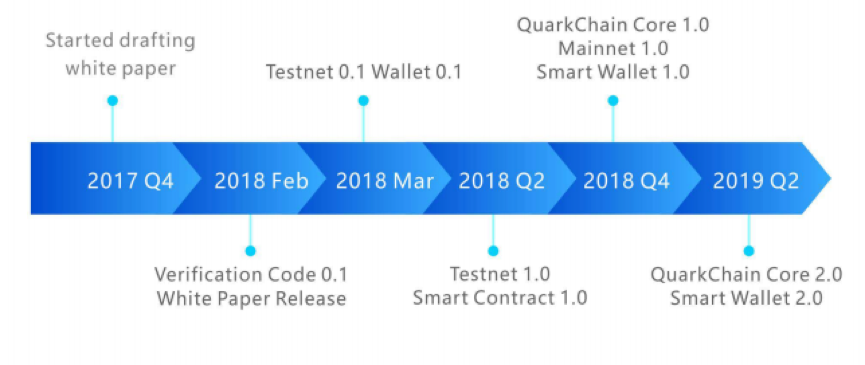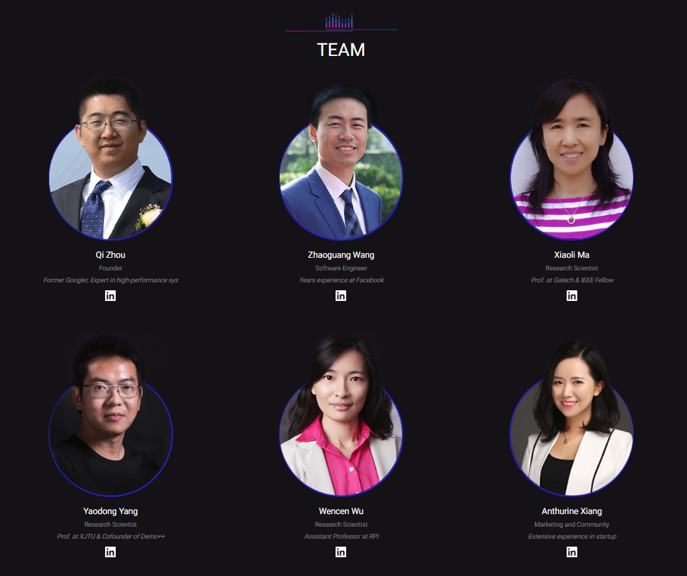QuarkChain (QKC) Review – A High TPS, Decentralized and Secure Blockchain
| Name | QuarkChain |
| Ticker | QKC |
| Token Type | ERC20 |
| Total Supply | 10,000,000,000 |
| Website URL | https://quarkchain.io/ |
| White Paper URL | https://quarkchain.io/QUARK%20CHAIN%20Public%20Version%200.3.5.pdf |
QuarkChain’s goal is to develop a blockchain that will achieve millions of transactions per second (TPS) while maintaining security and privacy on a decentralized network. It does this through its two-layered structure, cross-shard transactions, collaborative mining, and simple account management.
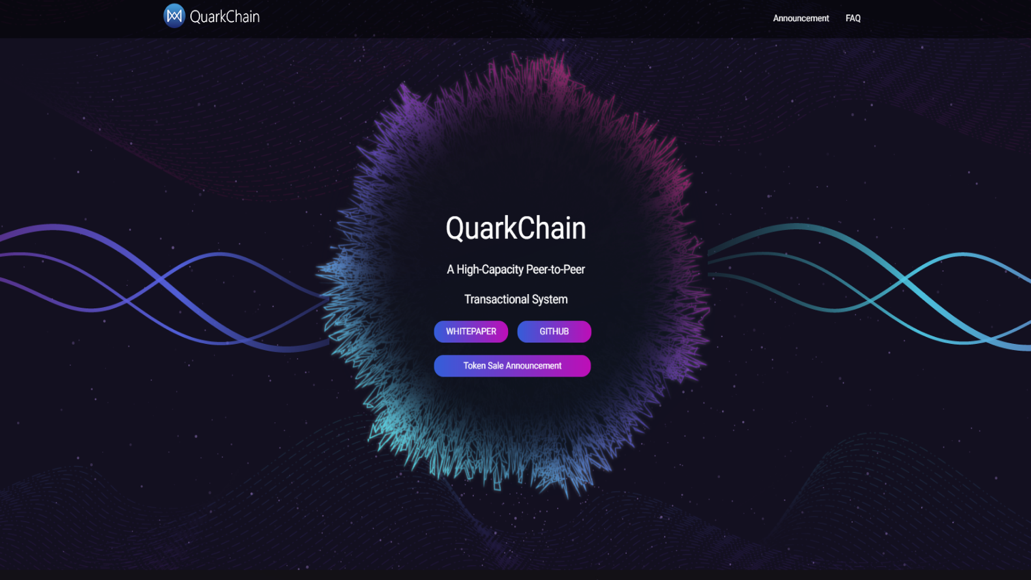
The Idea and the Team Behind QuarkChain
QuarkChain’s aim is to achieve over one million TPS to support the mainstream adoption of cryptocurrency. It is decentralized, secure, scalable and permissionless.
The QuarkChain team has extensive experience in developing large-scale distributed systems in the centralized world that are capable of handling billions of transactions per second. The team’s founder, Qi Zhou, is a former Googler with over 15 years of development experience and a PhD from Georgia Institute of Technology.
ZhaoGuang Wang is the team’s Senior Software Engineer, bringing 6 years of experience at both Facebook and Google. He has proven experience building systems that are capable of processing millions of queries per second. He has a masters in computer science from the University of Michigan.
QuarkChain Partnerships
QuarkChain has a number of strategic partnerships and investors, including a number of known investors such as 500 Startups, Fission Capital, and Hashed. After its recent success of raising $20 million in its ICO, it will probably announce additional partnerships in the near future.
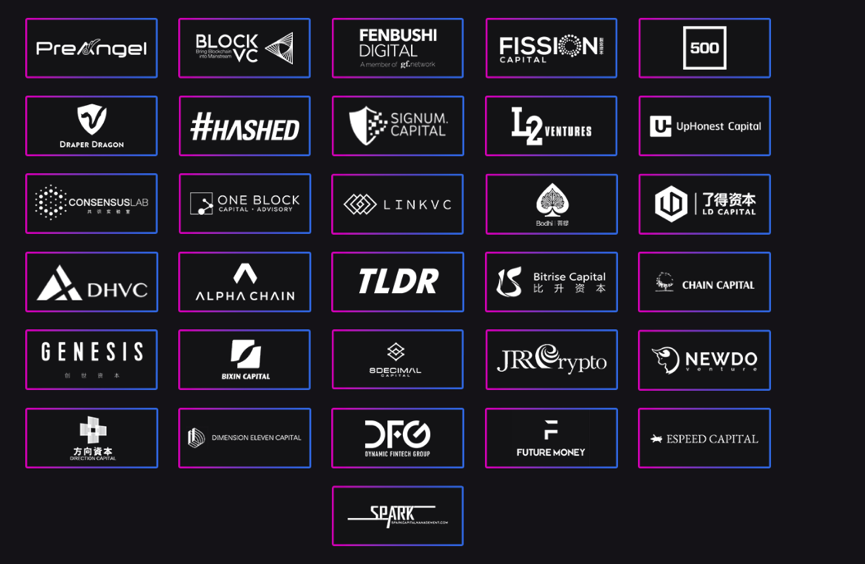
QuarkChain Price History
After its token sale that took place from June 2 to June 3, QuarkChain’s tokens were worth $0.0197. They briefly peaked at $0.33 on June 5, after which they continuing decreasing yet maintaining a steady value.
QuarkChain was listed on Binance on June 4, one day after its ICO.
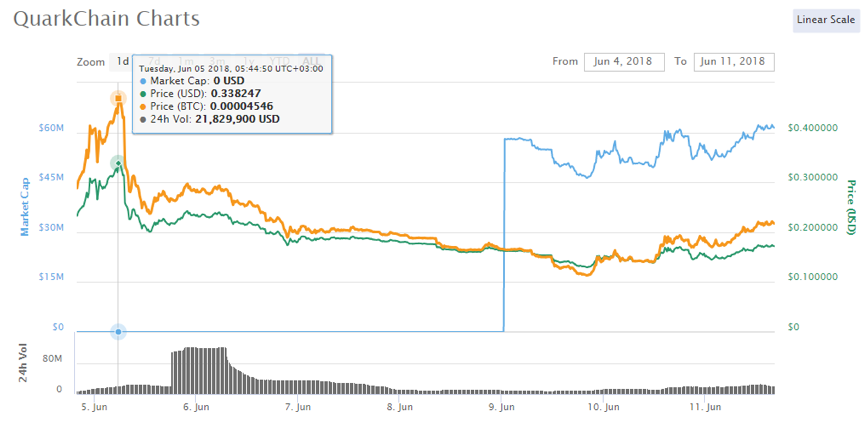
The QuarkChain Technology
QuarkChain seeks to answer the three-fold challenge the current blockchain model presents: security, decentralization, and scalability. All are essential, but currently require tradeoffs between the three. For example, an increase in security requires a larger amount of data for each transaction, slowing down transaction speed.
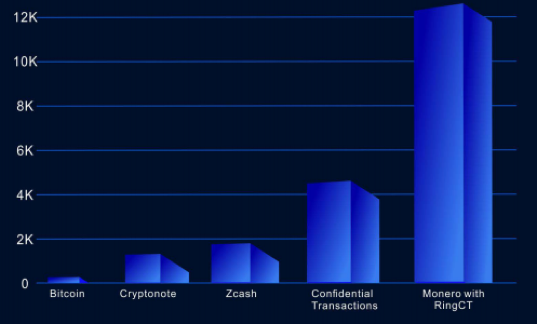
Bytes needed per transaction for increased security
Although several different solutions have been proposed, none of them are sufficient.
Transactions on Multiple Blockchains
One idea to improve scalability is to have different transactions across multiple blockchains like Bitcoin, Litecoin, and Ethereum, simultaneously. The problem with this approach is that each blockchain will have a lower hash power operating it. In addition, smaller chains have posed a bigger security threat: It is comparatively easy to gain enough hash power to have a 51% attack. This approach also is limited in allowing access only to cryptocurrency exchanges with higher trading fees, longer processing times, and pose security risks.
The Lightning Network
Another solution is the Lightning Network, which limits transactions to a particular group until the transactions are finalized. The problem is that when a transaction needs to take place outside that group. Another concern with the Lightning Network is the reliance on third parties.
Sharding Techniques
Sharding has been another technique used to help address scalability. The idea is to divide data into smaller bits. Ethereum has adopted this technology but is not scheduled to support cross-shard transaction for another 3-5 years. In addition, it has questionable security, like single shared take-over, and scalability concerns.
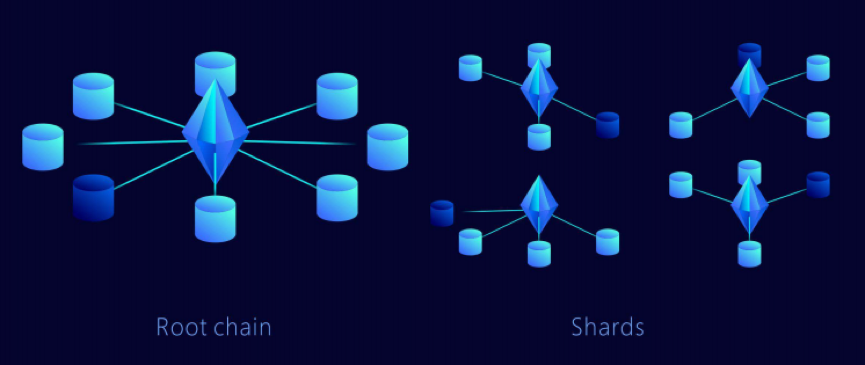
QuarkChain
QuarkChain’s vision is to enable the blockchain to increase its current TPS capacity to about 100,000 TPS with a two-layered blockchain approach. Each minor blockchain would process a subset of all transactions, and the root blockchain would confirm the blocks in all shards.
The QuarkChain Network
The QuarkChain network includes sharding-based blockchain architecture. It has 8 minor blockchains that have a target block duration of 10 seconds and a root blockchain with a target block duration of 150 seconds.
QuarkChain has a two-layer structured blockchain system, one with elastic sharding principles, and another root blockchain as the second layer that confirms transactions. The two layers are separate so that there is no need to change the root layer.
Another important feature of QuarkChain is its ability to provide scalability while maintaining affordability. Most blockchain structures with a high TPS become extremely expensive, but QuarkChain’s multiple cheap nodes form clusters to replace these expensive super-full nodes.
As opposed to the sharding technique in Ethereum, the QuarkChain network fully supports cross-sharding that can be confirmed in minutes and scaled linearly as the number of shards increases to allows users to perform transactions at scale in a cost-effective manner. The QuarkChain Network’s goal is to be affordable to all while at the same time free of congestion, enabling it to deliver widespread applications in social media, high frequency trading, the Internet of Things (IoT), gaming and payment.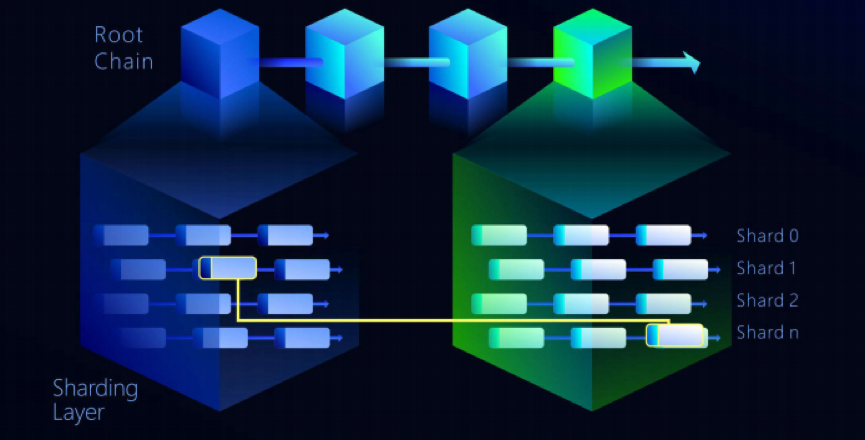
In addition, the QuarkChain Network allows users to manage all addresses in all shards through one account, which greatly simplifies account management. Smart wallets perform cross-shard or in-shard transactions and can receive payments from all users within seconds, without the users’ awareness.
QuarkChain uses Proof of Work (PoW) as its consensus mechanism for its root chain since it has been found to be secure and reliable. It decided to build on a system that is already in existence and spend time and resources on developing a solution for the scalability challenge in the blockchain.
The QuarkChain Token
The QuarkChain token is a utility token that is used as a unit of exchange to power the QuarkChain Network. QKC will be issued as an ERC-20 token and later be switched to tokens on the blockchain of the QuarkChain network when Mainnet is ready.
The tokens in the ICO were distributed as follows:
- 16% – Locked up for private sale (7 months vesting period)
- 4% – Sold in crowdsale
- 15% – Distributed to the team
- 15% – Set aside for the foundation (all 15% are locked for 2 years)
- 5% – Distributed to advisors
- 45% – Set aside for mining, community and marketing purposes
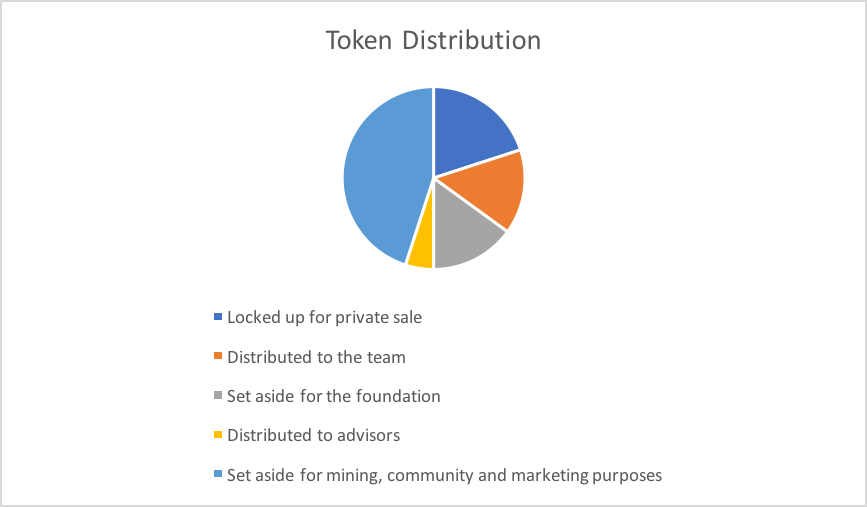
How to Purchase QKC
The main exchange for purchasing QKC is on Binance, which currently has the largest exchange of the currency. QKC can be traded on Binance for BTC and ETH.
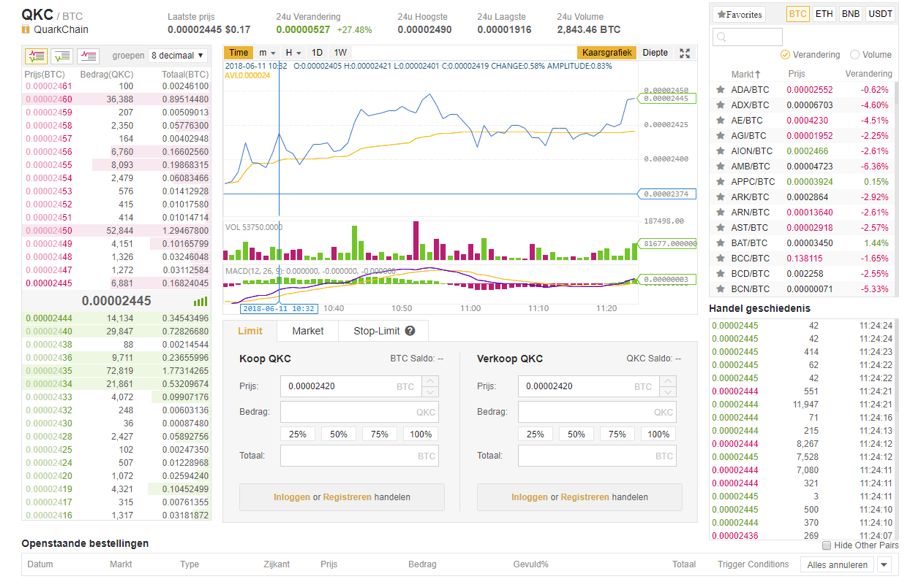
QKC is also available on the following exchanges:
- gate.io (Trade QKC with USDT)
- LATOKEN (Trade QKC with ETH on LATOKEN)
- Kucoin (Trade QKC with ETH on Kucoin)
- IDEX (Trade QKC with USDT on IDEX)
- LBank (Trade QKC with ETH on LBank)
How to Store QKC
QKC can be stored in any wallet that supports ERC-20 tokens such as Coinomi, MetaMask and Myetherwallet.
For maximum security, however, you should store your QKC on hardware wallets such as Ledger Nano S and Trezor.
Roadmap and Future Plans
QuarkChain’s timeline includes reaching Testnet 1.0 by Q2 of 2018 and Mainnet 1.0 by Q4 of 2018. It is currently working on Testnet and its Smart Wallet feature.
It is scheduled to release its Quartchain Core and Smart Wallet 2.0 by Q2 of 2019.
